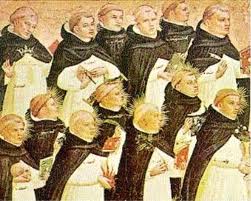In the recent shake-up of the Second Vatican Council (Vatican II) regarding the substitution of Latin from the liturgy, one is hard-pressed to find any old school Gregorian chanting in the Church today (outside of older, traditional churches).
In an article written for Crisis magazine, Arlene Oost-Zinner and Jeffery Tucker wrote:
“You can find recordings of Gregorian chant in every CD store. You can hear it at the concert hall…You can also hear it in movies, radios, and television. But one place you are not likely to hear it is at your local Catholic church.“
Now that I think about, I haven’t heard a single word of Latin spoken at my local Catholic Church. I’m not sure if any of the liturgy bore any Latin pre-Vatican II, but the substitution of the ancient language for local tongues implies a shift toward modernity in the Catholic Church. After all, Latin (like Sanskrit) is a language preserved only for liturgical usage. What place does it have in our modern world?
The answer is in the Sacrosanctum Concilium, the Vatican II document concerning the liturgy.
“The use of the Latin language is to be preserved in the Latin Rite (36).“
Vatican II goes on to say…
“The Church acknowledges Gregorian chant as specially suited to the Roman liturgy; therefore, other things being equal, it should be given pride of place in liturgical services (116).”
Being a huge fan of the chant this year over many religious traditions, I must agree. But what exactly is this Gregorian chant?
The chant is named after Pope St. Gregory the Great (540-604 A.D.). In his time, many chants were used in the burgeoning Christian world which carried over from the Jewish tradition and included the use of the Psalms. Pope St. Gregory compiled many of these chants and organized them over the entire liturgical year. The chants set the liturgy to holy sound and carry the message and mission of Christ’s Church harmoniously into the future. Ideally, the chants are performed a capello (without instrumental support) in groups (called schola), however individuals are also encouraged to use these chants for private prayer.
Today I’ll share a few of the more well-known Gregorian chants. Don’t be afraid to fall in love.
http://www.youtube.com/watch?v=_xmADtLsvWI
The first is “Ave Maria”, which is the Hail Mary prayer as a Gregorian chant.
Next we have “Adoro Te Devote”, written by none other than St. Thomas Aquinas, whose scholarship and passion for God and Church have served Catholicism for centuries. Here, we catch a glimpse of one who reaches for God with his entirety.
Here is “Jesu, Dulcis Memoria,” a chant which speaks of Christ as the greatest height and achievement of one’s ambition and being.
Finally, we have “Ave Vernum Corpus.” A short and potent meditation and prayer regarding the sacrificial role of Christ.
Chanting is primal. I learned during my time with Sanatana Dharma (Hinduism) just how powerful sound is and its important role in reality itself. The Om is the sound of reality, the cosmic background radiation of existence. Within a Christian context (and other faiths as well), was it not the voice of God that brought reality as we know it into being? Is Jesus not, as the Gospel writer St. John said, “the Word made flesh”?
Chanting and spiritual song is prayer that tunes itself with the divine. In my humble opinion, I don’t think sacred tradition within the Church should be swept aside so easily. We live in a time when, even in churches, we seek entertainment and sensuality. Services become concerts, homilies and sermons are now self-help seminars. The Christian must come to ask themselves, “Why am I here? Has church become an extension of entertainment?”
This isn’t to say that modern styles of music or worship are wrong. Remember that in the Vatican II document, we find that all these are “considered equal.” The traditional chants however, carry the liturgy and faith in a deep and special way. The chants are like a sacred, auditory vintage which cannot be replaced by current styles and fashion. In this way, I encourage people of all faiths, but Catholics now in particular, to revisit their chanting heritage. Use it today in your prayer life and see if your heart does not blossom toward the divine.
What are your feelings of the Latin chants? Do you use the Gregorian chants in your church or prayer life? What do you think about modern churches trying to keep congregations interested in the Gospel via modern music, etc? If the Gospel and liturgy were viewed in their purest reality, would we need such stimuli?


